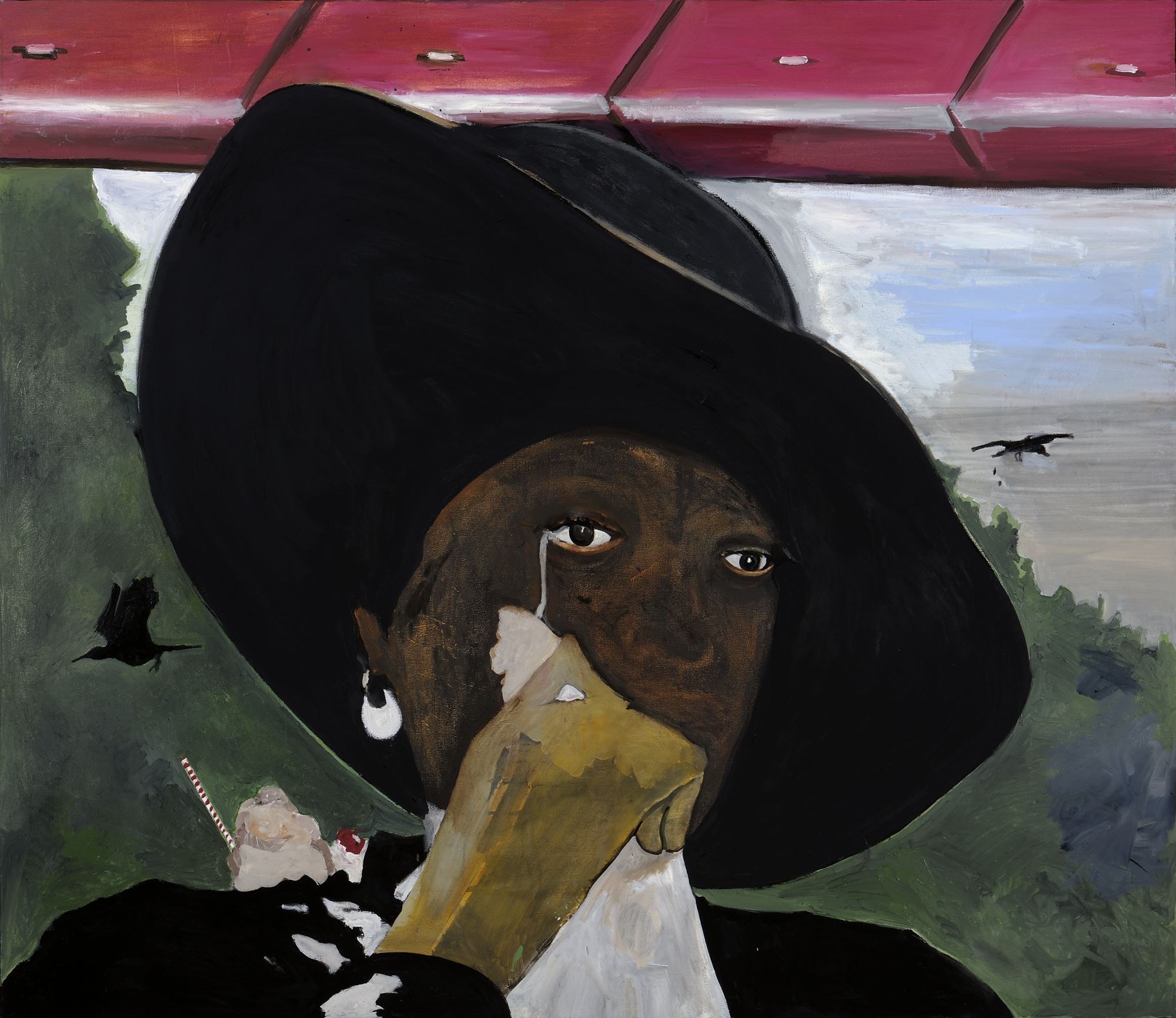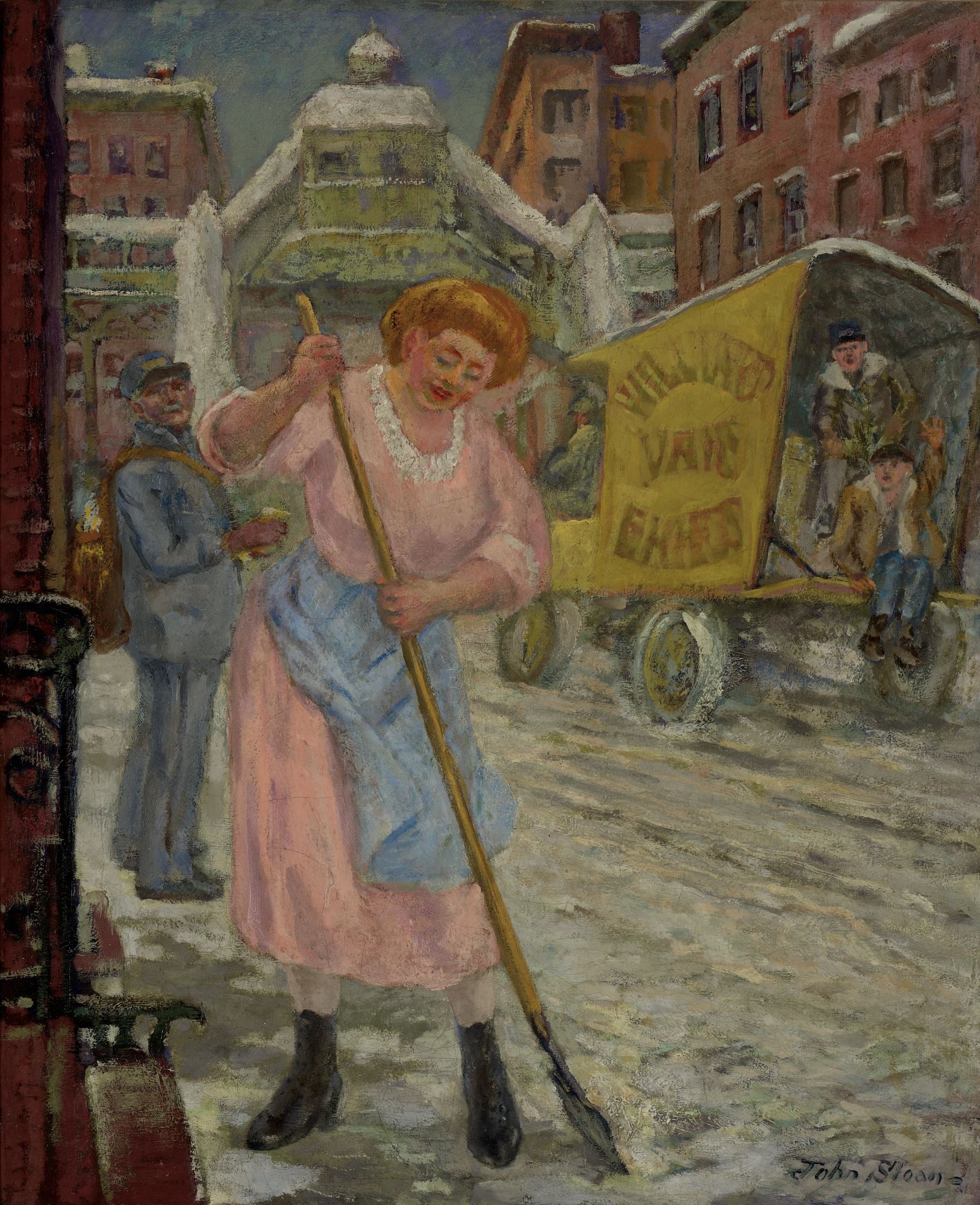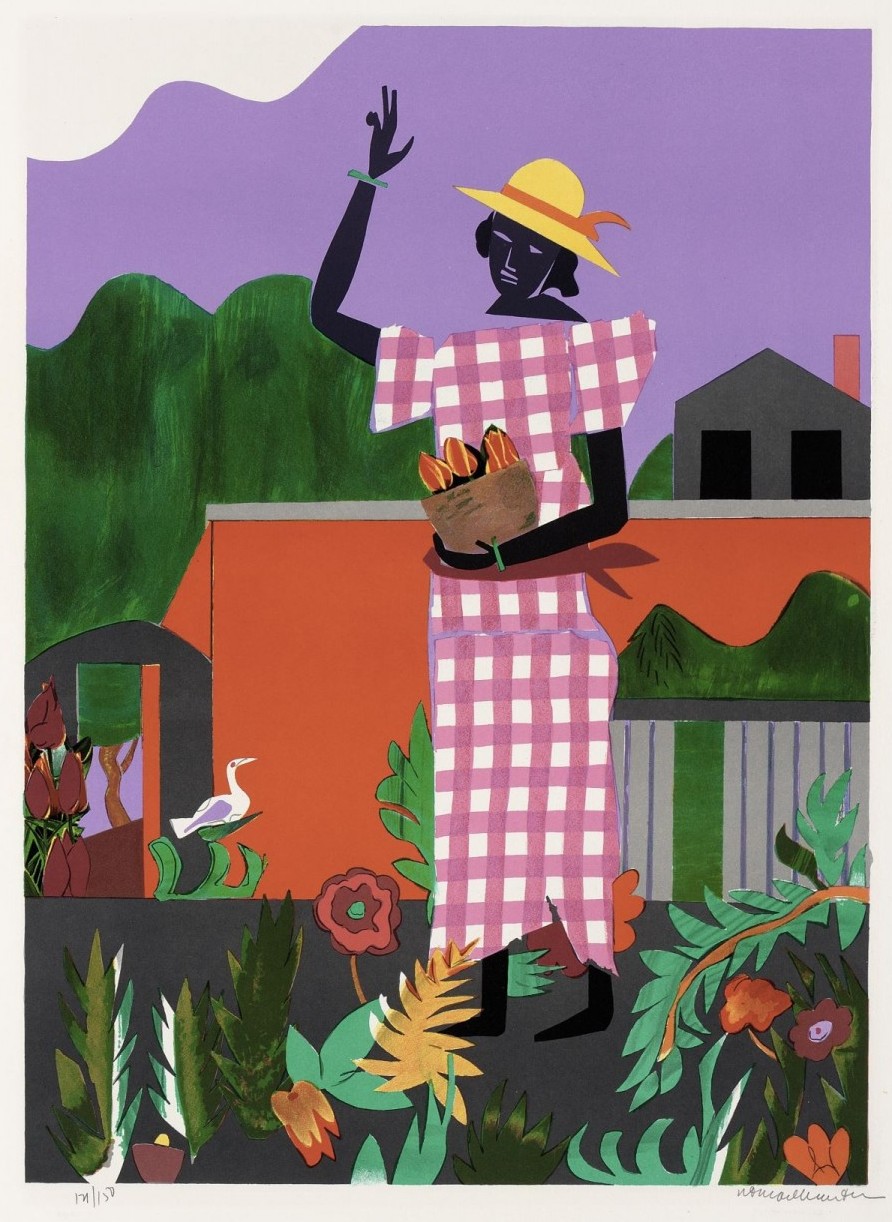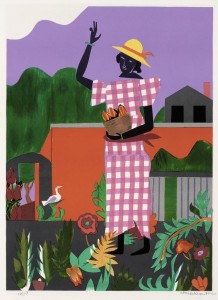Lesson Plan
Day 1
Language Arts Direct Instruction
Launch: “This week we are going to be reading a poem by Langston Hughes called ‘Mother to Son.’ Today we will figure out who the speaker is in the poem and why that’s important. Listen as I read the poem and think about who the character talking could be.”
Teacher reads poem expressively, depicting the voice, tone, and mood of the speaker.
Discuss: What did you notice about how the poem is written & how the teacher read the poem?
Discuss: Who is the speaker in the poem? How do we know? Who is she talking to? How do we know?
Language Arts Guided Practice / Application
The students do a shared reading of “Mother to Son” focusing on sounding like a mother talking to her son.
Writing Direct Instruction (does not have to immediately follow the poem in your schedule, can be done later on in the day)
Launch: “Today we are going to practice looking at a piece of art and describing details we see in the work of art. When we describe something, we tell about it using words that help others to visualize (make a picture in their mind) what we are observing. We are also going to practice writing complete sentences that tell about what we observed.”
Display Love Mom by Beverly McIver for 30 seconds and ask students to observe it and look for details.
After 30 seconds pass, hide the image or have the children turn away from it. Ask them to tell you the details that they observed.
Record their responses on chart paper in complete sentences. Point out the descriptive words students use and explain that these words are called “adjectives.”
Ask the students if they think they could come up with more details and adjectives if they had more time to look at the image.
Display the image again and continue to add to the chart using a different color pen.
Ask the students to explain what happened when they had more time to study the work of art. Discuss why it is important to pay attention to details and spend time with a work of art.
Writing Guided Practice / Application
Give the students a post-it note and ask them to write a sentence that describes one detail from the painting. (They could choose their favorite detail or their least favorite.) Explain that they will be using their observation skills to describe other works of art tomorrow.
Optional Pre-Assessment
As a pre-assessment you could have each student read the poem to you individually and do a running record during guided reading time. You could also complete a fluency rubric for each child (see attachment). On Friday you could re-assess the students and compare it with the baseline data from Monday.
Day 2
Language Arts Direct Instruction
Launch: “Today we are going to read “Mother to Son” again. Yesterday we figured out that the speaker in the poem is a mother and she’s talking to her son. Today we are going to figure out what she is telling her son.”
The teacher will read the first two lines of the poem and ask the students what they think a “crystal stair” could be. If students are having difficulty, think about what “crystal” is and how it is often associated with fancy things. As a group, brainstorm what the mother could mean when she says “Life for me ain’t been no crystal stair.” Record student ideas on the board.
Give the students whiteboards and markers or clipboards with paper. Tell them that you are going to read the poem to them again and as you read, they should pay attention to the description of the staircase. Ask them to draw what they are visualizing as they hear the poem.
Have the students compare/contrast the staircases they drew with their previous ideas about a crystal staircase. Use this conversation as a launching point for discussing what the mother is trying to tell her son about life.
Language Arts Guided Practice / Application
The students do a shared reading of “Mother to Son,” continuing to focus on sounding like a mother talking to her son, but also working on adding emphasis on the lines where the mother is telling her son not to give up.
Writing Direct Instruction (does not have to immediately follow the poem in your schedule, can be done later on in the day)
Launch: “Yesterday we worked together and practiced observing a work of art carefully and making notes that described the details we saw. Today you are going to practice observing and describing the details of two works of art with a partner.”
Bring out your anchor chart from the previous lesson with the image of Beverly McIver’s work. Ask the students to review the process we went through and emphasize that it’s important to hear others’ ideas and to spend time with the work of art in order to notice the details.
Writing Guided Practice / Application
Post two images paired together in different parts of the room. Pair the following images together:
- Black Widow with Brothers Fighting and In the Garden
- Love Mom and The Next Step
- Lovely Six Foota and Maid Cutting Ice
Pair students up and assign them a corner of the room. Give each student a recording sheet that contains the two images that correspond to those featured in their part of the room (see attachments). Depending on class size, you may have more than one group looking at each pairing of images.
Ask students to spend a few minutes talking to their partner about the details they see in each work of art. Leave the whole group chart with observations about the image of Love Mom on the board for students to refer to as an example.
After students have had time to talk to one another, allow each child time to individually write down their observations on their recording sheets.
After students have recorded their thoughts independently, encourage them to compare with their partners and add more details to their notes.
Come back together as a whole group and share about some of the details the students noticed and discuss how having a partner to talk with could help you see things you might have missed.
Day 3
Language Arts Direct Instruction
Launch: “Today we are going to read “Mother to Son” again. Yesterday we used clues in the poem to figure out what the mother was telling her son about life. Who can tell me what her message was?” (Allow 2-3 students to share) “Today we are going to practice using details from the text to make a picture in our mind of the speaker. Good readers use details and clues in the text to help them tell what’s happening. We call these mental pictures visualizations.”
Ask the students to close their eyes and visualize the mother as you read the poem aloud. Make a connection to the work they did during Writing where they focused on details. Encourage them to add details to their visualizations of the mother.
Language Arts Guided Practice / Application
Give the students a piece of drawing paper and ask them to draw a picture of the mother based on their visualizations of the text and write 1-2 detailed sentences describing her.
Have the students come together and put their drawings where everyone can see them. Ask students to share their descriptions. Note similarities and differences, but draw their attention specifically to some of the common and recurring ideas (e.g. she is older, she is tired, she seems strong or tough).
Do a shared reading of the poem, and emphasize that the students really think about how the character they visualized would say things.
Writing Direct Instruction (does not have to immediately follow the poem in your schedule, can be done later on in the day)
Launch: “Yesterday you worked with your partner to observe and describe the details in two works of art. Then you wrote about the details you noticed on your own. Today we are going use the details from one of the works of art you studied yesterday. You will have to form an opinion and support it with details. You may notice new details today as you look at the artwork again and try to support your opinion.”
Remind students that an opinion is a belief someone has that may be different from someone else’s belief. Give a few examples (e.g., favorite colors, top or bottom bunk, which candidate should be president). Emphasize that is okay for people to think differently and to have different opinions.
Re-visit the poem “Mother to Son” and read it together as a class. Then point out that all of the subjects featured in the artwork are women. Tell students that you want them to look at their images again today and form an opinion about which of the two women could be the speaker in the poem.
Writing Guided Practice / Application
Return students’ written response sheets from the previous lesson. Ask them to examine both images carefully in order to compare and contrast them with each other, the poem, and their visualizations from Language Arts of what the mother might look like.
Tell students to choose one of their two images that they think could be the mother from the poem. Ask them to circle details in their copy of the image that would support their conclusion. Provide them with index cards or post-it notes that they can attach to their work to list out at least 3 reasons why the woman in their chosen image could be the speaker from the poem.
After about 10 – 15 minutes, allow the kids to meet with their partner from the previous day. Remind students that it is okay for them to have different opinions (just like we all have different favorite opinions) and to hear one another’s reasons for choosing the image they selected.
Come back together as a group and discuss similarities and differences the students noticed in one another’s opinions and supporting details.
Day 4
Language Arts Direct Instruction
Launch: “Today we are going to think about the mood and practice reading the text the way the character would say it.”
Tell the students that they are going to get a chance to pretend to be a grown-up today. Ask them to think of a grown-up in their family and tell them that you are going to hold up some cards with sentences a grown up might say to a child. Explain that you want them to read the card in their heads and think about how a grown up would say that sentence. Examples include:
- “Let’s go to the park!”
- “Go to your room!”
- “I need to tell you something.”
- “I love you.”
- “I told you not to do that.”
Have the students take turns sharing aloud with the class how a grown up might say each of the sentences. Discuss how their voices changed based on what they were saying. Explain that good readers change our voice to match the mood of the characters and that we call the way our voice sounds our “tone of voice.”
Ask the kids to come up with words to describe the different tones they used as they read the “grown-up” sentences. Record their responses on the board. Then ask the students which tone of voice they think the mother is using in the poem and ask them to support their answers with details from the text.
Discuss how the poem would change if we changed our tone of voice and why it is important for readers to pay attention to what the text says to help them identify the tone to use whether they are reading aloud or in their heads.
Language Arts Guided Practice / Application
The students do a shared reading of “Mother to Son,” continuing to focus on sounding like a mother talking to her son and emphasizing that it’s important to never give up, but also focusing on using a serious tone of voice.
Day 5
Language Arts Direct Instruction
Launch: “Today we will read ‘Mother to Son’ again. Yesterday we practiced thinking about what tone of voice a character would use and matching our tone to the character’s tone as we read the poem. Today we will continue to think about how the mother would sound as she talks to her son.”
Have the kids brainstorm a list of things a good reader should do to read the poem fluently and with expression. Record their thoughts on the board.
Language Arts Guided Practice / Application
Pair the students up with a partner and ask them to take turns reading the poem aloud to each other. Have the partners provide feedback to one another about two of the fluency and expression criteria they did well at and 1 aspect to work on.
Do a shared reading of the poem as a class. Discuss how our reading has gotten better over the week and ask the students to explain why it has improved.
The students will fill out a self-evaluation rubric of their fluency and expression. (see attachment)











